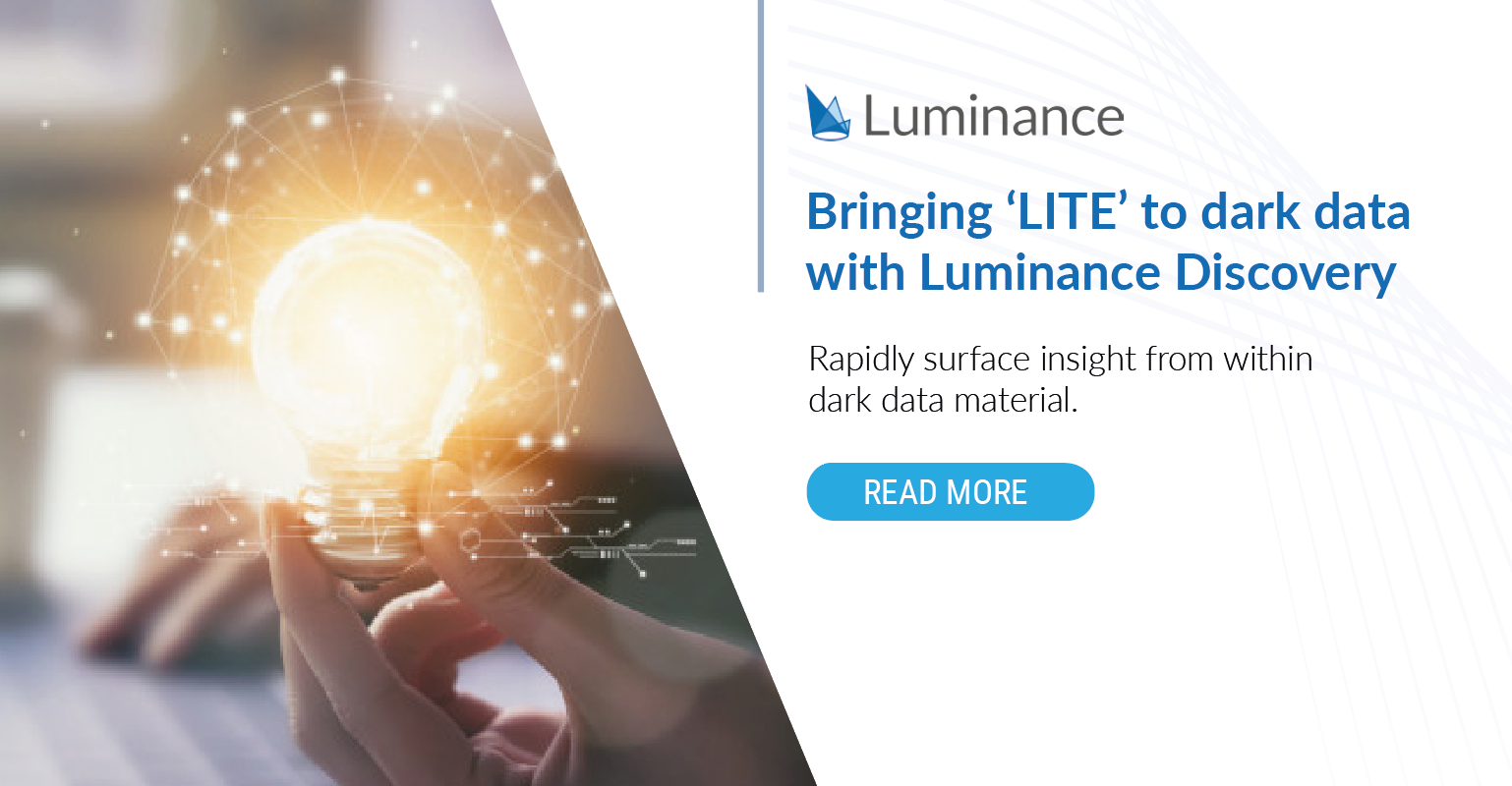
Blog
Bringing ‘LITE’ to dark data with Luminance Discovery
21 September 2020 | Luminance
Dark data- it may sound ominous, but it is something that we interact with every day. Defined by Gartner as “the information assets organisations collect, process and store during regular business activities, but generally fail to use for other purposes” and including anything from emails, foreign language documents, audio and video files and financial statements, every modern investigation involves some form of dark data. Using cutting-edge tools like Luminance Discovery, litigators are able to rapidly surface insight from within dark data material, resulting in huge time and cost savings.
Dealing with the data deluge
IBM estimate that 90% of the world’s data was created in the last two years alone- the vast majority of this is thought to be ‘dark data’. Indeed, computer processing power has doubled every year, leading to an explosion in corporate data and mounting pressure on advisors who are now expected to review thousands-if not millions- of documents for a single review. In order to fully grasp the contents of their datasets, an increasing number of lawyers are turning to Luminance’s innovative eDiscovery platform.
Founded by mathematicians from the University of Cambridge, Luminance is powered by the Legal Inference Transformation Engine, or ‘LITE’. This core combines cutting-edge supervised and unsupervised machine learning with pattern-recognition to read and form an understanding of all legal data at record speeds. Luminance is able to analyse and then display vast datasets to legal teams on a graphic, interactive display, enabling lawyers to conduct a thorough and robust review, confident that no stone has been left unturned.
Illuminate your dataset with Luminance
Take the example of The 36 Group, a leading London barristers’ chambers who recently deployed Luminance for a high-profile murder investigation. The dataset the legal team were examining surpassed over 10,000 documents and included dark data such as telephone records, photos, emails and even handwritten notes. With no prior training, Luminance was able to immediately surface conceptually similar documents to the document which was under review, allowing the team to gain a fuller understanding of their data whilst also ensuring that nothing was overlooked. Using Luminance, the team were able to shave four weeks off their review time during the disclosure phase alone.
The 36 Group’s review was further bolstered by Luminance’s advanced Optical Character Recognition (OCR) software which automatically converts scanned documents or image-based text files into searchable content. Most recently, a leading UK law firm was able to find a crucial piece of evidence via a photo of a label on a bottle using Luminance Discovery.
Staying compliant with Luminance
Further compounding the issue of dark data is an upsurge in data privacy regulations such as the European General Data Protection Regulation (GDPR) and the California Consumer Privacy Act (CCPA) which place stringent obligations on organisations to effectively manage personally identifiable information. Over the years, the scope of personally identifiable information has grown considerably to now include ‘dark data’ such as medical records, financial records and communications from within social media platforms.
Under data privacy regulations, individuals now also have the right to make a Data Subject Access Request (DSAR). Failure to comply with this can be costly for many organisations. Under the CCPA for instance, in the event of non-compliance, organisations can be fined up to $7,500 per violation. It is therefore critical for investigators to invest in a tool that provide them with an all-encompassing overview of a dataset. Burness Paull, a top tier Scottish law firm, was recently instructed by a long-time client after they had received a Data Subject Access Request (DSAR) from a former employee in line with the GDPR. Using Luminance, a single associate was able to analyse over 6,000 documents, achieving an incredible 50% time saving.
Unlock true business potential
Dark data is be growing at enormous rate of 62% per year. Using Luminance Discovery, legal teams are empowered to gain a fuller understanding of the material contained within their dataset, allowing them to uncover risk within dark data at record speeds and with unparalleled insight.